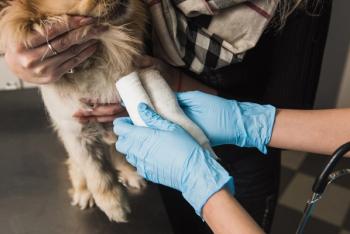
How to get the most out of your radiographs in emergency situations
WVC clinical speaker discusses how to interpret radiographs quickly and accurately in critical patients.
Obtaining radiographs of critical patients in general practice requires immediate and accurate interpretation of a wide variety of medical conditions and a fast diagnosis without a consult. Speaking at the Western Veterinary Conference on Monday, William Widmer, DVM MS, DACVR, professor emeritus at the Purdue University School of Veterinary Medicine delivered tips on how to get the most out of your radiographic studies in emergency situations.
First, you need to know what normal looks like, and you must obtain high quality images. Second, avoid technical errors such as obtaining an insufficient number of views. In most cases, a minimum of two views are needed, but in a few cases, three views are necessary, such as in patients with cranial vault fractures (in addition to the lateral and ventrodorsal or dorsoventral views, obtain a rostral-caudal view). However, in some cases, only one view is needed-for example, in patients with atlantoaxial subluxation, you'll identify excess space between C1 and C2 on the lateral view, which is sufficient for a diagnosis. Obtaining a ventrodorsal view in those patients could result in severe spinal cord injury.
Third, avoid interpretation errors such as making a snap diagnosis without thoroughly evaluating the image and making the imaging findings match your presumptive diagnosis.
Fourth, use chemical restraint in most cases, not physical restraint to obtain the images you need. An exception is patients in which the protective reflexes should be maintained, such as in suspected atlantoaxial subluxation.
Dr. Widmer also offered a trick he sometimes uses to identify rib fractures, which are easy to overlook: place the radiograph on the viewer upside down. He says this altered perspective sometimes helps the abnormalities jump out at you.
Newsletter
From exam room tips to practice management insights, get trusted veterinary news delivered straight to your inbox—subscribe to dvm360.




